Land Cover Overview - GLOBE Observer
What is GLOBE Land Cover?

GLOBE Land Cover is an app-based tool that will help you document what is on the land (land cover). Once you have downloaded the GLOBE Observer app and created an account, the Land Cover tool will guide you through the observation process. You will report on current surface conditions, then take photographs in all four cardinal directions, up and down. Optionally, you can classify the land cover in your photographs, telling us if it is grassland, a forest or an urban area, as well as compare your classification to a satellite land cover observation and note any differences. Even a basic observation without optional elements is valuable!
For more details about how to take observations, including tips and tricks, additional tutorials beyond what is in the app, and frequently asked questions about how to observe, visit the Taking Observations page. Our Resource Library includes additional activities, references, videos and book lists.
Why are my observations important?
Land cover is the base dataset for many areas of critical science, including hazard analysis for floods, fires and landslides, mapping wildlife habitat, and tracking the impacts of climate change. Even though land cover is familiar to everyone on the planet, the most detailed satellite-based maps of global land cover are still on the order of hundreds of meters [about 330 feet] per pixel. That means that a park in a city may be too small to show up on the global map. GLOBE Observer: Land Cover can fill in local gaps and contribute to consistent, detailed global maps. Find out more about the science of land cover and how it is studied on the Land Cover Science page.
Because land cover can influence the atmosphere (clouds), mosquito habitats, and defines the broader ecosystem for trees, it is helpful if you take a land cover observation whenever you observe mosquito habitats, trees, or clouds.
Student Research
In addition to research done by professional scientists, because GLOBE Observer is part of The GLOBE Program, which is active in thousands of schools across the world, citizen scientists are strengthening science education by providing data for student research.
Here are a few examples of student research reports related to land cover:
"The Relationship Between Weather Parameters, Normalized Difference Vegetation Index (NDVI), Land Cover, and Mosquito Born Diseases," by Barnabas Mutuku, Jemima Kanini, Evelyn Nyambura, Junior Mahala, David Muhia and Sharon Makhoha, students from St. Scholastica Catholic School in Nairobi, Kenya; GLOBE Teacher Amos Kaui; submitted to GLOBE on 11 March 2020.
"NDVI Technology for Food Security and Better Health in Kenya," by students Manal G. Ahmed, Hadyah Mwidau, Mohammed Haji, students from the Shree Swaminnarayan Academy in Mombasa, Kenya; GLOBE Teacher, Kennedy Otieno; submitted to GLOBE on 77 February 2020.
"An Analytical Study of Ground Cover, Soil and Water of Falag Al-Khafeeji in Al-Amerat State and its Impact on Neighboring Sewage Reservoirs," by students from Alsheefa Bint Awf Basic School, in Muscat, Oman; GLOBE Teacher, Wafa Altamtami; submitted to GLOBE on 27 February 2018.
For more research reports related to land cover, visit the GLOBE Student Research Reports page (filtered for the Land Cover Classification protocol).








